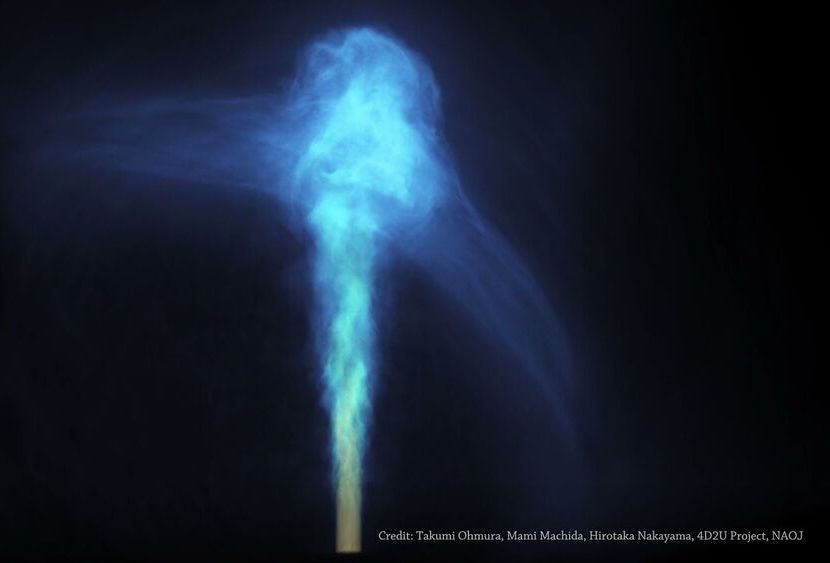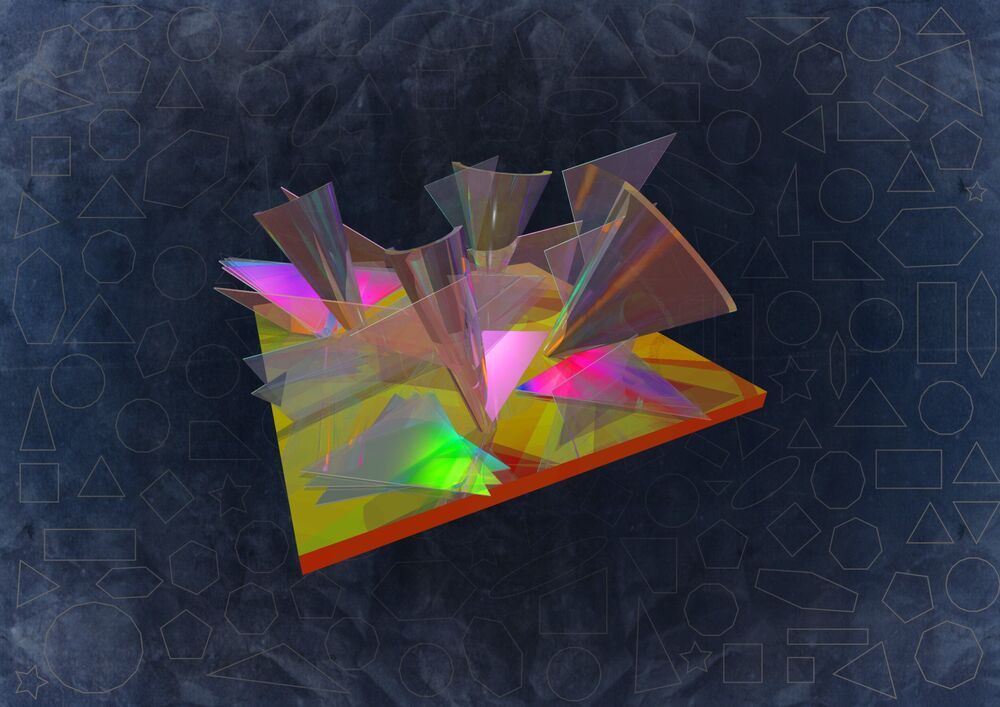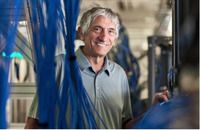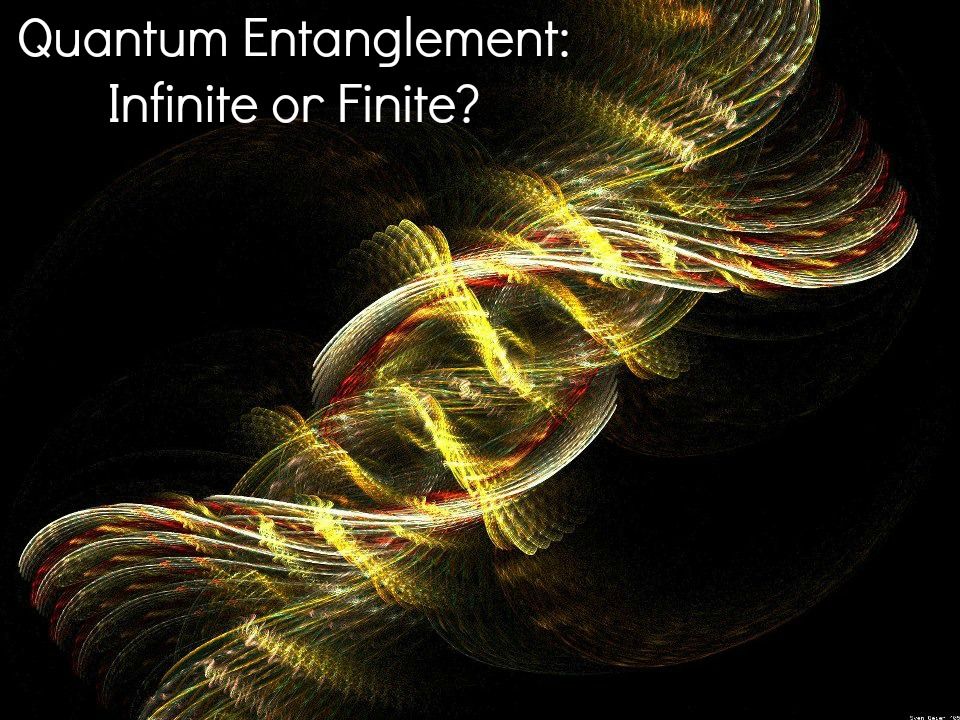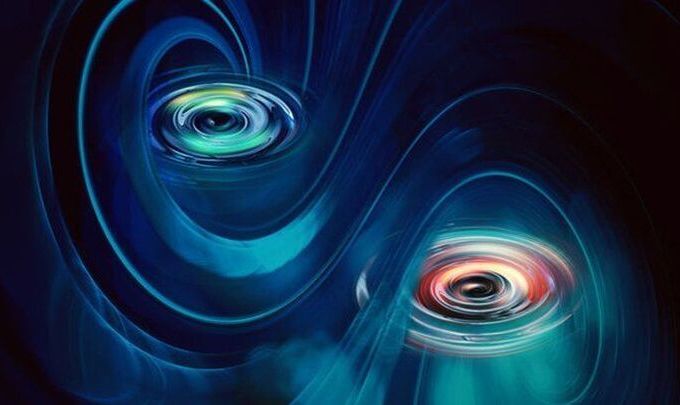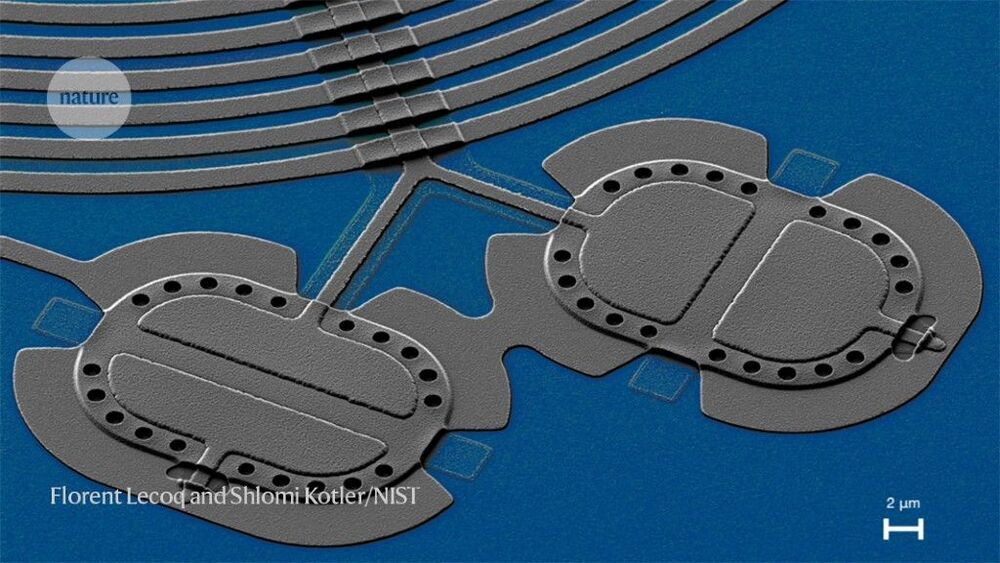An international team of physicists has shown experimentally for the first time how a Bose-Einstein condensate — tens of thousands of quanta of ‘liquid light’ — is formed in the thinnest monatomic film of a semiconductor crystal. The team includes the head of the Spin Optics Laboratory at St Petersburg University, Professor Alexey Kavokin. This discovery will help create new types of lasers capable of producing qubits — the main integral parts of quantum computers of the future.
Category: particle physics – Page 412
The results of a new muon experiment are stirring up particle physics.
The results of a Fermilab experiment might open up the standard model of particle physics.
New observations and simulations show that jets of high-energy particles emitted from the central massive black hole in the brightest galaxy in galaxy clusters can be used to map the structure of invisible inter-cluster magnetic fields. These findings provide astronomers with a new tool for investigating previously unexplored aspects of clusters of galaxies.
As clusters of galaxies grow through collisions with surrounding matter, they create bow shocks and wakes in their dilute plasma. The plasma motion induced by these activities can drape intra-cluster magnetic layers, forming virtual walls of magnetic force. These magnetic layers, however, can only be observed indirectly when something interacts with them. Because it is simply difficult to identify such interactions, the nature of intra-cluster magnetic fields remains poorly understood. A new approach to map/characterize magnetic layers is highly desired.
In 1884, Edwin Abbott wrote the novel Flatland: A Romance in Many Dimensions as a satire of Victorian hierarchy. He imagined a world that existed only in two dimensions, where the beings are 2D geometric figures. The physics of such a world is somewhat akin to that of modern 2D materials, such as graphene and transition metal dichalcogenides, which include tungsten disulfide (WS2), tungsten diselenide (WSe2), molybdenum disulfide (MoS2) and molybdenum diselenide (MoSe2).
Modern 2D materials consist of single-atom layers, where electrons can move in two dimensions but their motion in the third dimension is restricted. Due to this ‘squeeze’, 2D materials have enhanced optical and electronic properties that show great promise as next-generation, ultrathin devices in the fields of energy, communications, imaging and quantum computing, among others.
Typically, for all these applications, the 2D materials are envisioned in flat-lying arrangements. Unfortunately, however, the strength of these materials is also their greatest weakness—they are extremely thin. This means that when they are illuminated, light can interact with them only over a tiny thickness, which limits their usefulness. To overcome this shortcoming, researchers are starting to look for new ways to fold the 2D materials into complex 3D shapes.
In 2001 at the Brookhaven National Laboratory in Upton, New York, a facility used for research in nuclear and high-energy physics, scientists experimenting with a subatomic particle called a muon encountered something unexpected.
To explain the fundamental physical forces at work in the universe and to predict the results of high-energy particle experiments like those conducted at Brookhaven, Fermilab in Illinois, and at CERN ’s Large Hadron Collider in Geneva, Switzerland, physicists rely on the decades-old theory called the Standard Model, which should explain the precise behavior of muons when they are fired through an intense magnetic field created in a superconducting magnetic storage ring. When the muon in the Brookhaven experiment reacted in a way that differed from their predictions, researchers realized they were on the brink of a discovery that could change science’s understanding of how the universe works.
Earlier this month, after a decades-long effort that involved building more powerful sensors and improving researchers’ capacity to process 120 terabytes of data (the equivalent of 16 million digital photographs every week), a team of scientists at Fermilab announced the first results of an experiment called Muon g-2 that suggests the Brookhaven find was no fluke and that science is on the brink of an unprecedented discovery.
John Martinis has done groundbreaking research on coherent superconducting devices since his PhD at the University of California, Berkeley, in 1985. These superconducting devices can be modeled as lumped-element electric circuits using Josephson junctions, capacitors and inductors as components. The fact that a superconducting phase across a Josephson junction can display coherent quantum behavior – even though it is a property of the wave function of an immense number of electrons – can be viewed as a fundamental discovery [1], kickstarting, in retrospect, the field of superconducting quantum computing.
John Martinis invented and developed the superconducting phase qubit, based on a current-biased Josephson junction, for the purpose of scalable multi-qubit quantum computing [2]. In 2002, he first demonstrated coherent Rabi oscillations and quantum measurement for such superconducting phase qubit [3]. He has had a longstanding interest in understanding the origin of noise in superconducting electric circuits as these sources of noise naturally limit qubit coherence. In particular, his understanding of noise sources such as dielectric loss, flux noise and the presence and dynamics of quasi-particles [4], by means of simple physical models, have been instrumental in the field. The effect and mitigation of quasi-particles and how they are affected by radiation and cosmic rays continues to be of high interest for the future of superconducting quantum devices [5, 6].
An important step showing his leadership and commitment to building a quantum computer came with his 2014 move, as a Professor at UCSB, to Google, where he gathered a large team of physicists and engineers to tackle the challenge of making a multi-qubit programmable processor. This team has excelled in its relentless focus on optimizing device performance by implementing successful engineering choices for qubit design, couplers and scalable I/O.
A team of Chinese physicists are making some serious progress in the field of quantum mechanics. Recently, this team has measured the speed of quantum entanglement – more affectionately known as “spooky action at a distance”, as Einstein called it.
To summarize quantum entanglement, two or more particles are entangled, which means they share the same wave form. The more technical definition is: “Quantum entanglement occurs when particles such as photons, electrons, molecules as large as buckyballs, and even small diamonds interact physically and then become separated; the type of interaction is such that each resulting member of a pair is properly described by the same quantum mechanical description (state), which is indefinite in terms of important factors such as position, momentum, spin, polarization, etc.”
When most people describe this interesting process, they’ll describe the information transfer as ‘instantaneous’ or ‘near-instantaneous’. Several research teams have attempted to measure the actual speed seen in the transfer of information in entangled systems, but have failed in one way or another, usually resulting from flawed methodology dealing in quantum nonlocality.
Quantum entanglement is the binding together of two particles or objects, even though they may be far apart – their respective properties are linked in a way that’s not possible under the rules of classical physics.
It’s a weird phenomenon that Einstein described as “spooky action at a distance”, but its weirdness is what makes it so fascinating to scientists. In new research, quantum entanglement has been directly observed and recorded at the macroscopic scale – a scale much bigger than the subatomic particles normally associated with entanglement.
The dimensions involved are still very small from our perspective – these experiments involved two tiny aluminum drums one-fifth the width of a human hair – but in the realm of quantum physics they’re absolutely huge.
Findings that could help further understand how living tissue reacts to radiation exposure.
Energy flows through a system of atoms or molecules by a series of processes such as transfers, emissions, or decay. You can visualize some of these details like passing a ball (the energy) to someone else (another particle), except the pass happens quicker than the blink of an eye, so fast that the details about the exchange are not well understood. Imagine the same exchange happening in a busy room, with others bumping into you and generally complicating and slowing the pass. Then, imagine how much faster the exchange would be if everyone stepped back and created a safe bubble for the pass to happen unhindered.
An international collaboration of scientists, including UConn Professor of Physics Nora Berrah and post-doctoral researcher and lead author Aaron LaForge, witnessed this bubble-mediated enhancement between two helium atoms using ultrafast lasers. Their results are now published in Physical Review X.
Although nothing in the laws of quantum physics limits such quantum weirdness to subatomic particles, the theory predicts that at much larger scales — say, the size of a cat — quantum effects should be so vanishingly small as to be unobservable in practice. Physicists have long debated whether this is just a limitation of our senses and instruments, or whether macroscopic objects are governed by their own set of laws that is fundamentally different from quantum mechanics. To explore this question, researchers have been pushing to observe quantum effects at ever larger scales. “One point of our research is, is there quantum in the classical world?” says Mika Sillanpää, a physicist at Aalto University in Finland.
Quantum drums
In an experiment at the US National Institute of Standards and Technology in Boulder, Colorado, physicist Shlomi Kotler and his collaborators built a pair of vibrating aluminium membranes akin to two tiny drums, each around 10 micrometres long.

